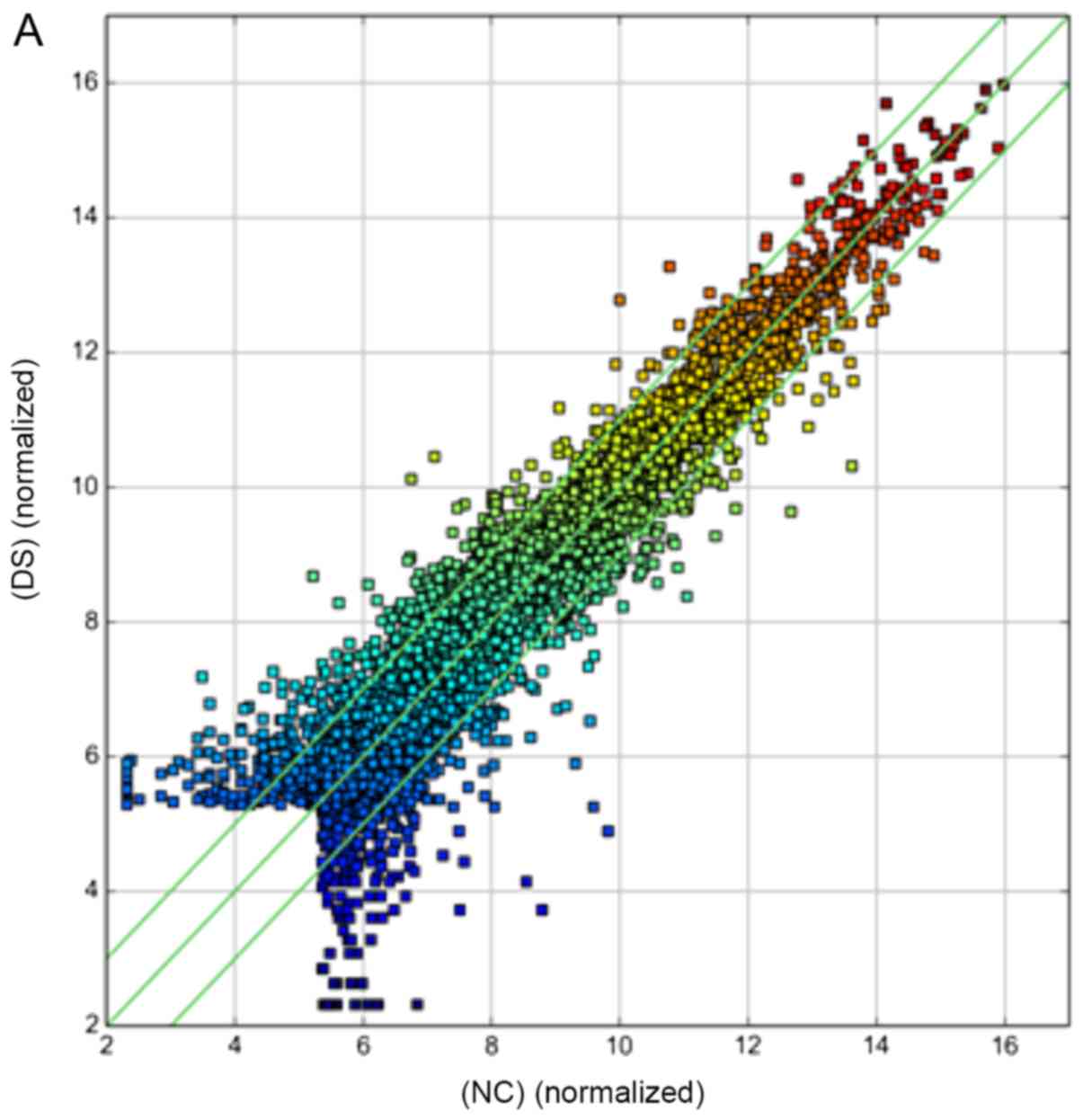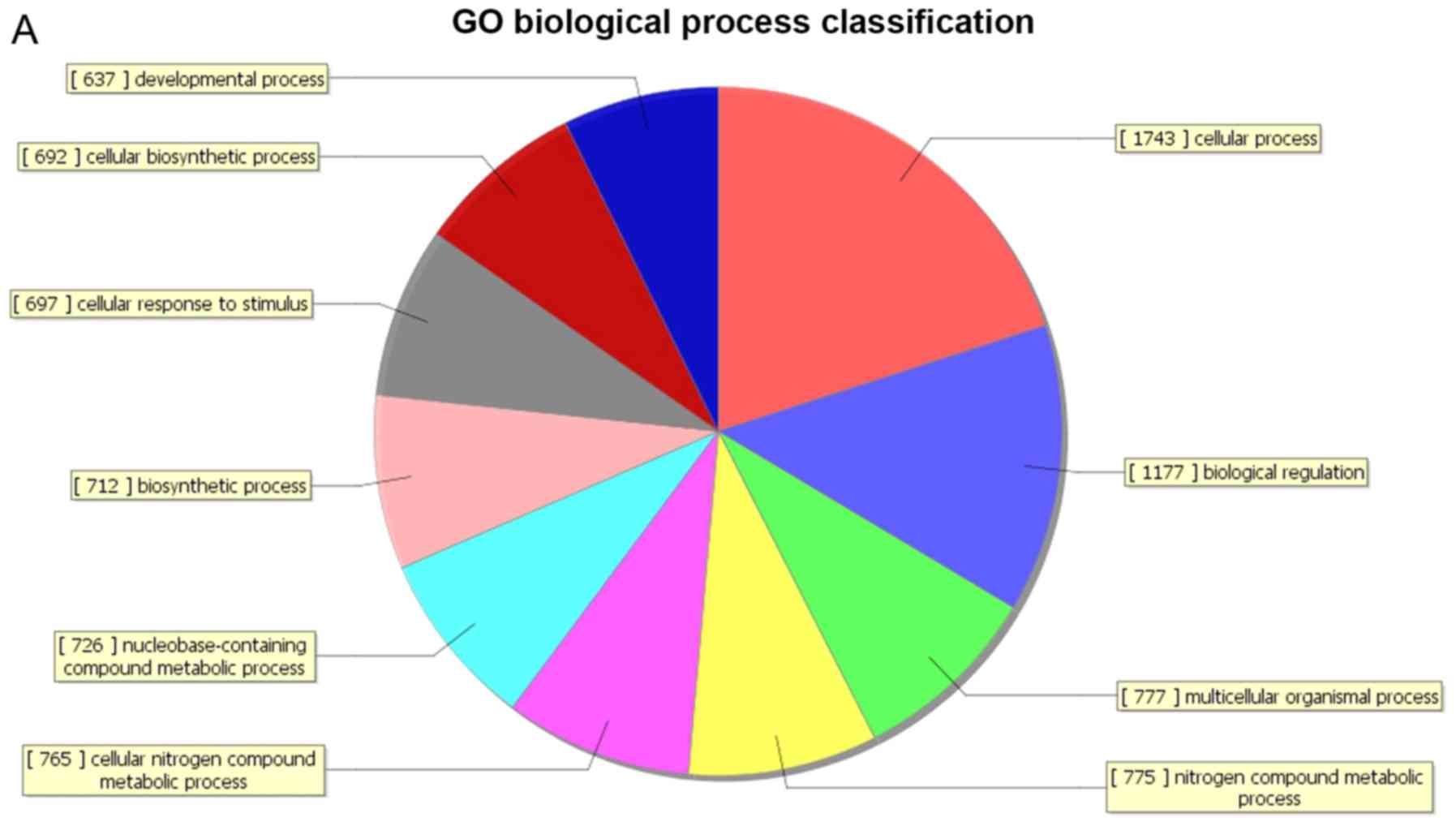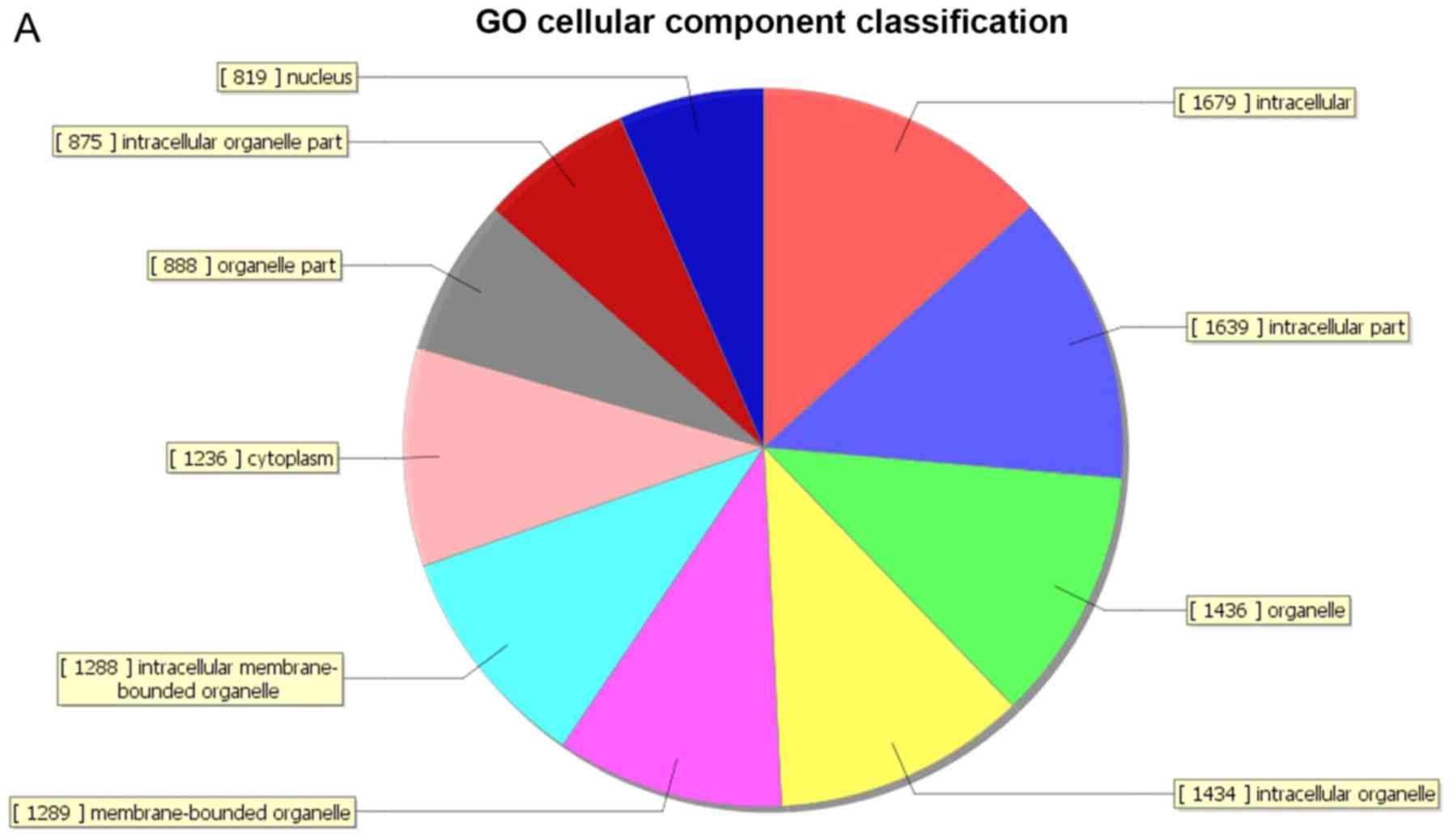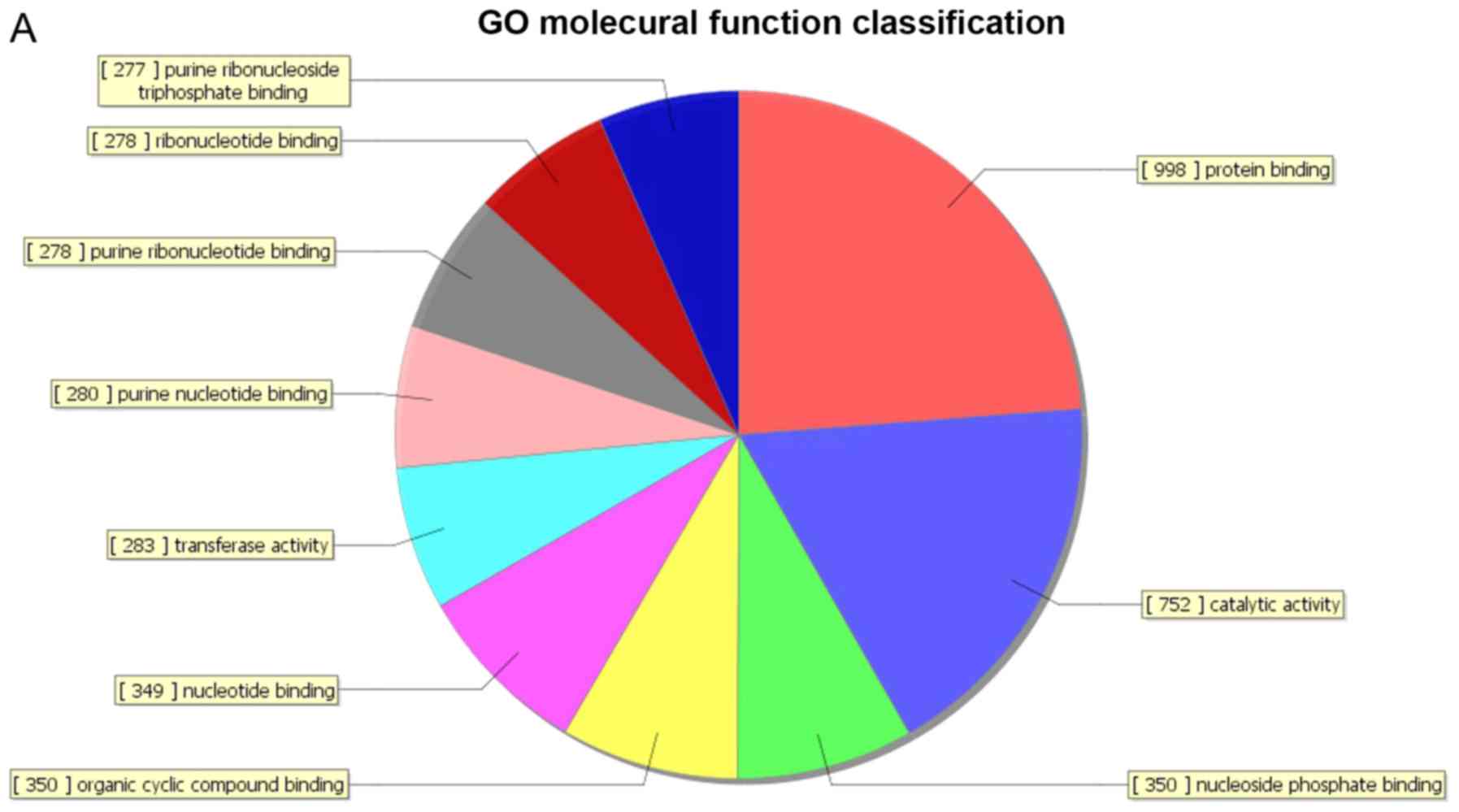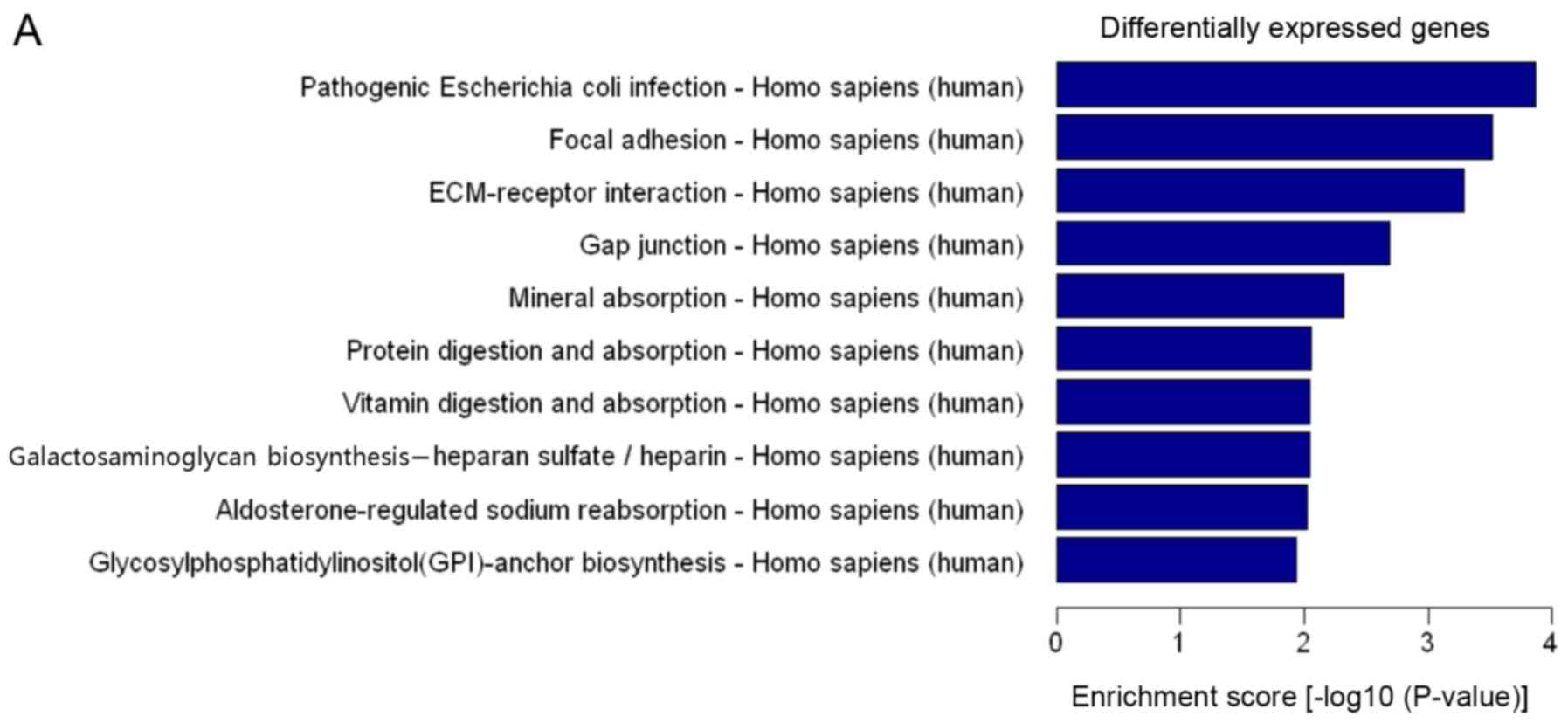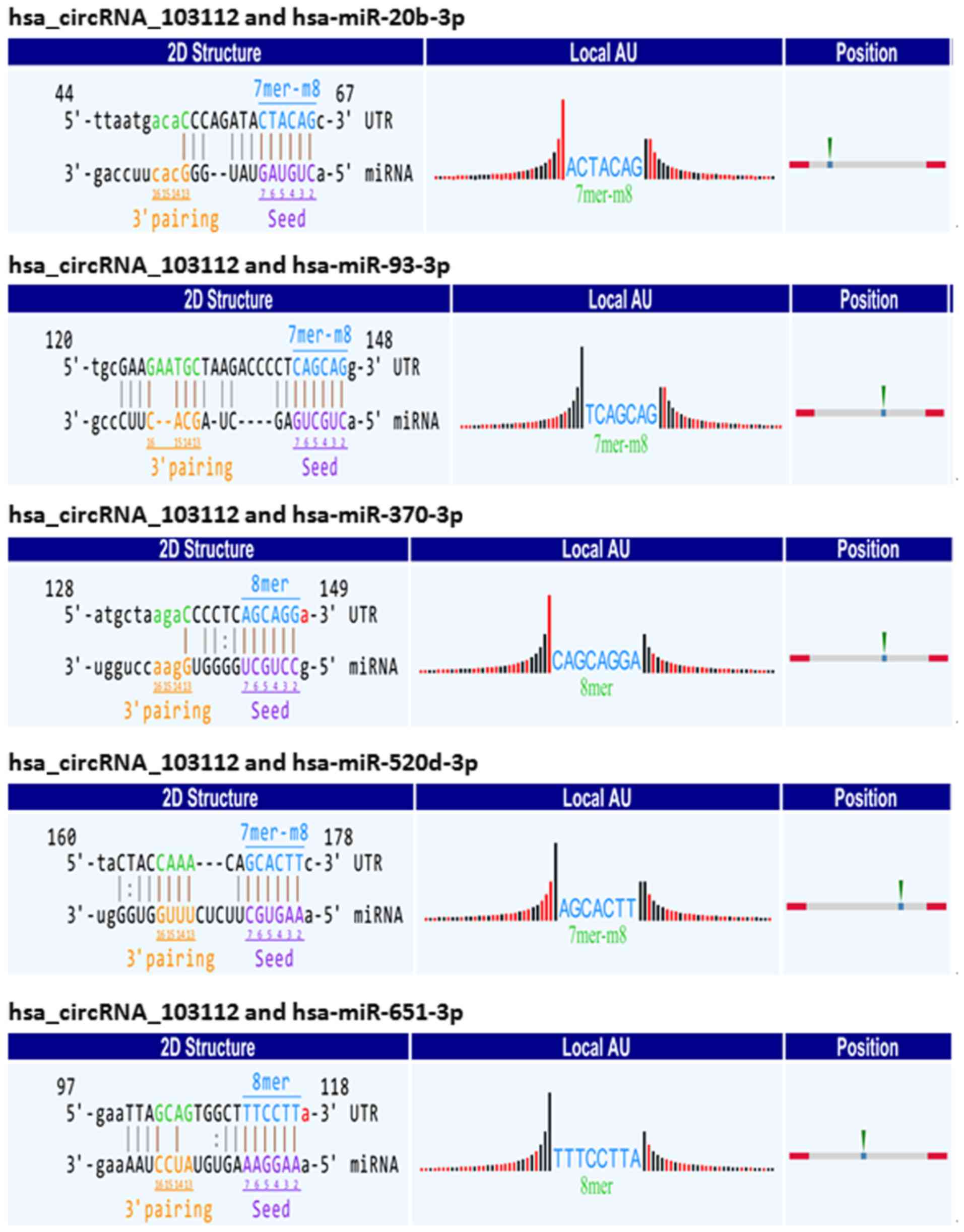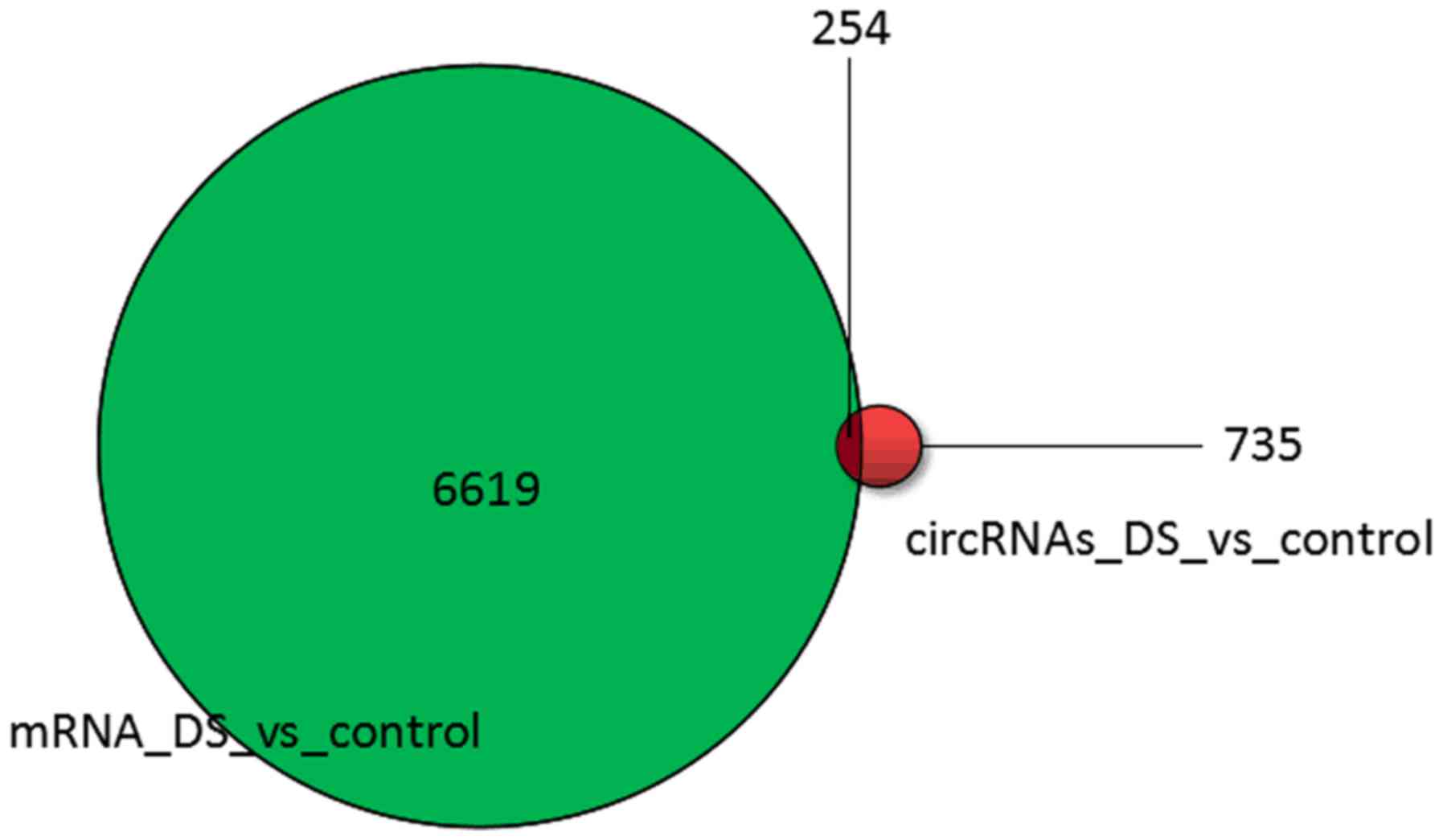|
1
|
Kleschevnikov AM, Belichenko PV, Villar
AJ, Epstein CJ, Malenka RC and Mobley WC: Hippocampal long-term
potentiation suppressed by increased inhibition in the Ts65Dn
mouse, a genetic model of down syndrome. J Neurosci. 24:8153–8160.
2004. View Article : Google Scholar : PubMed/NCBI
|
|
2
|
Roizen NJ and Patterson D: Down's
syndrome. Lancet. 361:1281–1289. 2003. View Article : Google Scholar : PubMed/NCBI
|
|
3
|
Caughey AB, Washington AE and Kuppermann
M: Perceived risk of prenatal diagnostic procedure-related
miscarriage and down syndrome among pregnant women. Am J Obstet
Gynecol. 198:333 e331–338. 2008. View Article : Google Scholar
|
|
4
|
Antonarakis SE, Lyle R, Dermitzakis ET,
Reymond A and Deutsch S: Chromosome 21 and down syndrome: From
genomics to pathophysiology. Nat Rev Genet. 5:725–738. 2004.
View Article : Google Scholar : PubMed/NCBI
|
|
5
|
Thase ME: Longevity and mortality in downs
syndrome. J Ment Defic Res. 26:177–192. 1982.PubMed/NCBI
|
|
6
|
Cortés-López M, Gruner MR, Cooper DA,
Gruner HN, Voda AI, van der Linden AM and Miura P: Global
accumulation of circRNAs during aging in Caenorhabditis elegans.
BMC Genomics. 19:82018. View Article : Google Scholar : PubMed/NCBI
|
|
7
|
Chen LL and Yang L: Regulation of circRNA
biogenesis. RNA Biol. 12:381–388. 2015. View Article : Google Scholar : PubMed/NCBI
|
|
8
|
Salomon LJ, Alfirevic Z, Audibert F, Kagan
KO, Paladini D, Yeo G and Raine-Fenning N; ISUOG Clinical Standards
Committee, : ISUOG updated consensus statement on the impact of
cfDNA aneuploidy testing on screening policies and prenatal
ultrasound practice. Ultrasound Obstet Gynecol. 49:815–816. 2017.
View Article : Google Scholar : PubMed/NCBI
|
|
9
|
Houseley JM, Garcia-Casado Z, Pascual M,
Paricio N, O'Dell KM, Monckton DG and Artero RD: Noncanonical RNAs
from transcripts of the Drosophila muscleblind gene. J Hered.
97:253–260. 2006. View Article : Google Scholar : PubMed/NCBI
|
|
10
|
Salzman J, Gawad C, Wang PL, Lacayo N and
Brown PO: Circular RNAs are the predominant transcript isoform from
hundreds of human genes in diverse cell types. PLoS One.
7:e307332012. View Article : Google Scholar : PubMed/NCBI
|
|
11
|
Salzman J, Chen RE, Olsen MN, Wang PL and
Brown PO: Cell-type specific features of circular RNA expression.
PLoS Genet. 9:e10037772013. View Article : Google Scholar : PubMed/NCBI
|
|
12
|
Jeck WR, Sorrentino JA, Wang K, Slevin MK,
Burd CE, Liu J, Marzluff WF and Sharpless NE: Circular RNAs are
abundant, conserved, and associated with ALU repeats. RNA.
19:141–157. 2013. View Article : Google Scholar : PubMed/NCBI
|
|
13
|
Memczak S, Jens M, Elefsinioti A, Torti F,
Krueger J, Rybak A, Maier L, Mackowiak SD, Gregersen LH, Munschauer
M, et al: Circular RNAs are a large class of animal RNAs with
regulatory potency. Nature. 495:333–338. 2013. View Article : Google Scholar : PubMed/NCBI
|
|
14
|
Zhang Y, Zhang XO, Chen T, Xiang JF, Yin
QF, Xing YH, Zhu S, Yang L and Chen LL: Circular intronic long
noncoding RNAs. Mol Cell. 51:792–806. 2013. View Article : Google Scholar : PubMed/NCBI
|
|
15
|
Guo JU, Agarwal V, Guo H and Bartel DP:
Expanded identification and characterization of mammalian circular
RNAs. Genome Biol. 15:4092014. View Article : Google Scholar : PubMed/NCBI
|
|
16
|
Li Z, Huang C, Bao C, Chen L, Lin M, Wang
X, Zhong G, Yu B, Hu W, Dai L, et al: Exon-intron circular RNAs
regulate transcription in the nucleus. Nat Struct Mol Biol.
22:256–264. 2015. View Article : Google Scholar : PubMed/NCBI
|
|
17
|
Valdmanis PN and Kay MA: The expanding
repertoire of circular RNAs. Mol Ther. 21:1112–1114. 2013.
View Article : Google Scholar : PubMed/NCBI
|
|
18
|
Hansen TB, Jensen TI, Clausen BH, Bramsen
JB, Finsen B, Damgaard CK and Kjems J: Natural RNA circles function
as efficient microRNA sponges. Nature. 495:384–388. 2013.
View Article : Google Scholar : PubMed/NCBI
|
|
19
|
Kaikkonen MU, Lam MT and Glass CK:
Non-coding RNAs as regulators of gene expression and epigenetics.
Cardiovasc Res. 90:430–440. 2011. View Article : Google Scholar : PubMed/NCBI
|
|
20
|
Chu T, Mouillet JF, Hood BL, Conrads TP
and Sadovsky Y: The assembly of miRNA-mRNA-protein regulatory
networks using high-throughput expression data. Bioinformatics.
31:1780–1787. 2015. View Article : Google Scholar : PubMed/NCBI
|
|
21
|
Chen CY and Sarnow P: Initiation of
protein synthesis by the eukaryotic translational apparatus on
circular RNAs. Science. 268:415–417. 1995. View Article : Google Scholar : PubMed/NCBI
|
|
22
|
Perriman R and Ares M Jr: Circular mRNA
can direct translation of extremely long repeating-sequence
proteins in vivo. RNA. 4:1047–1054. 1998. View Article : Google Scholar : PubMed/NCBI
|
|
23
|
Hentze MW and Preiss T: Circular RNAs:
Splicing's enigma variations. EMBO J. 32:923–925. 2013. View Article : Google Scholar : PubMed/NCBI
|
|
24
|
Bohjanen PR, Colvin RA, Puttaraju M, Been
MD and Garcia-Blanco MA: A small circular TAR RNA decoy
specifically inhibits Tat-activated HIV-1 transcription. Nucleic
Acids Res. 24:3733–3738. 1996. View Article : Google Scholar : PubMed/NCBI
|
|
25
|
Hansen TB, Kjems J and Damgaard CK:
Circular RNA and miR-7 in cancer. Cancer Res. 73:5609–5612. 2013.
View Article : Google Scholar : PubMed/NCBI
|
|
26
|
Li Y, Zheng Q, Bao C, Li S, Guo W, Zhao J,
Chen D, Gu J, He X and Huang S: Circular RNA is enriched and stable
in exosomes: A promising biomarker for cancer diagnosis. Cell Res.
25:981–984. 2015. View Article : Google Scholar : PubMed/NCBI
|
|
27
|
Sun H, Tang W, Rong D, Jin H, Fu K, Zhang
W, Liu Z, Cao H and Cao X: Hsa_circ_0000520, a potential new
circular RNA biomarker, is involved in gastric carcinoma. Cancer
Biomark. 21:299–306. 2018. View Article : Google Scholar : PubMed/NCBI
|
|
28
|
Yang Y, Gao X, Zhang M, Yan S, Sun C, Xiao
F, Huang N, Yang X, Zhao K, Zhou H, et al: Novel role of FBXW7
Circular RNA in repressing glioma tumorigenesis. J Natl Cancer
Inst. 110:304–315. 2018. View Article : Google Scholar
|
|
29
|
Livak KJ and Schmittgen TD: Analysis of
relative gene expression data using real-time quantitative PCR and
the 2(-Delta Delta C(T)) method. Methods. 25:402–408. 2001.
View Article : Google Scholar : PubMed/NCBI
|
|
30
|
Enright AJ, John B, Gaul U, Tuschl T,
Sander C and Marks DS: MicroRNA targets in drosophila. Genome Biol.
5:R12003. View Article : Google Scholar : PubMed/NCBI
|
|
31
|
Pasquinelli AE: MicroRNAs and their
targets: Recognition, regulation and an emerging reciprocal
relationship. Nat Rev Genet. 13:271–282. 2012. View Article : Google Scholar : PubMed/NCBI
|
|
32
|
Lawrie CH: MicroRNAs and haematology:
Small molecules, big function. Br J Haematol. 137:503–512. 2007.
View Article : Google Scholar : PubMed/NCBI
|
|
33
|
Yan-Liang D and Xiao-Nan Y: Combined serum
and ultrasound screening for early diagnosis of Down's syndrome.
Chin J Prac Gynecol Obstetrics. 26:895–898. 2010.
|
|
34
|
Benn PA, Kaminsky LM, Ying J, Borgida AF
and Egan JF: Combined second trimester biochemical and ultrasound
screening for Down syndrome. Obstet Gynecol. 100:1168–1176. 2001.
View Article : Google Scholar
|
|
35
|
Langlois S and Brock JA; Genetics
Committee, : Current status in non-invasive prenatal detection of
down syndrome, trisomy 18, and trisomy 13 using cell-free DNA in
maternal plasma. J Obstet Gynaecol Can. 35:177–181. 2013.(In
English, French). View Article : Google Scholar : PubMed/NCBI
|
|
36
|
Kolker A and Burke BM: Grieving the wanted
child: Ramifications of abortion after prenatal diagnosis of
abnormality. Health Care for Women Int. 14:513–526. 1993.
View Article : Google Scholar
|
|
37
|
Wu Q, Wang Y, Cao M, Pantaleo V, Burgyan
J, Li WX and Ding SW: Homology-independent discovery of replicating
pathogenic circular RNAs by deep sequencing and a new computational
algorithm. Proc Natl Acad Sci USA. 109:3938–3943. 2012. View Article : Google Scholar : PubMed/NCBI
|
|
38
|
Stamova B, Ander BP, Barger N, Sharp FR
and Schumann CM: Specific regional and age-related small Noncoding
RNA expression patterns within superior temporal gyrus of typical
human brains are less distinct in autism brains. J Child Neurol.
30:1930–1946. 2015. View Article : Google Scholar : PubMed/NCBI
|
|
39
|
Lo YC, Chen YJ, Hsu YC, Tseng WI and Gau
SS: Reduced tract integrity of the model for social communication
is a neural substrate of social communication deficits in autism
spectrum disorder. J Child Psychol Psychiatry. 58:576–585. 2017.
View Article : Google Scholar : PubMed/NCBI
|
|
40
|
Yanni J, Zi M, Choudhury M, Cai X,
Logantha S, Li J, Cartwright E, Dobrzynski H, Hart G and Boyett MR:
MicroRNA 370-3p could explain the dysfunction of the cardiac
conduction system in heart failure. Proc Physiol Soc.
34:PC1582015.
|
|
41
|
Warner G, Howlin P, Salomone E, Moss J and
Charman T: Profiles of children with Down syndrome who meet
screening criteria for autism spectrum disorder (ASD): A comparison
with children diagnosed with ASD attending specialist schools. J
Intellect Disabil Res Jidr. 61:75–82. 2017. View Article : Google Scholar : PubMed/NCBI
|
|
42
|
Levine OR and Simpser M: Alveolar
hypoventilation and cor pulmonale associated with chronic airway
obstruction in infants with down syndrome. Clin Pediatr (Phila).
21:25–29. 1982. View Article : Google Scholar : PubMed/NCBI
|
|
43
|
Valero R, Marfany G, González-Angulo O,
González-González G, Puelles L and Gonzàlez-Duarte R: USP25, a
novel gene encoding a deubiquitinating enzyme, is located in the
gene-poor region 21q11.2. Genomics. 62:395–405. 1999. View Article : Google Scholar : PubMed/NCBI
|
|
44
|
Valero R, Bayés M, Francisca Sánchez-Font
M, González-Angulo O, Gonzàlez-Duarte R and Marfany G:
Characterization of alternatively spliced products and
tissue-specific isoforms of USP28 and USP25. Genome Biol.
2:RESEARCH00432001. View Article : Google Scholar : PubMed/NCBI
|
|
45
|
Ciechanover A and Brundin P: The ubiquitin
proteasome system in neurodegenerative diseases: Sometimes the
chicken, sometimes the egg. Neuron. 40:427–446. 2003. View Article : Google Scholar : PubMed/NCBI
|
|
46
|
Hershko D, Bornstein G, Ben-Izhak O,
Carrano A, Pagano M, Krausz MM and Hershko A: Inverse relation
between levels of p27Kip1 and of its ubiquitin ligase subunit Skp2
in colorectal carcinomas. Cancer. 91:1745–1751. 2001. View Article : Google Scholar : PubMed/NCBI
|
|
47
|
Jones MH, Furlong RA, Burkin H, Chalmers
IJ, Brown GM, Khwaja O and Affara N: The drosophila developmental
gene fat facets has a human homologue in Xp11.4 which escapes
X-inactivation and has related sequences on Yq11.2. Hum Mol Genet.
5:1695–1701. 1996. View Article : Google Scholar : PubMed/NCBI
|
|
48
|
Schwer H, Liu LQ, Zhou L, Little MT, Pan
Z, Hetherington CJ and Zhang DE: Cloning and characterization of a
novel human ubiquitin-specific protease, a homologue of murine
UBP43 (USP18). Genomics. 65:44–52. 2000. View Article : Google Scholar : PubMed/NCBI
|
|
49
|
Dalmay T: Mechanism of miRNA-mediated
repression of mRNA translation. Essays Biochem. 54:29–38. 2013.
View Article : Google Scholar : PubMed/NCBI
|















